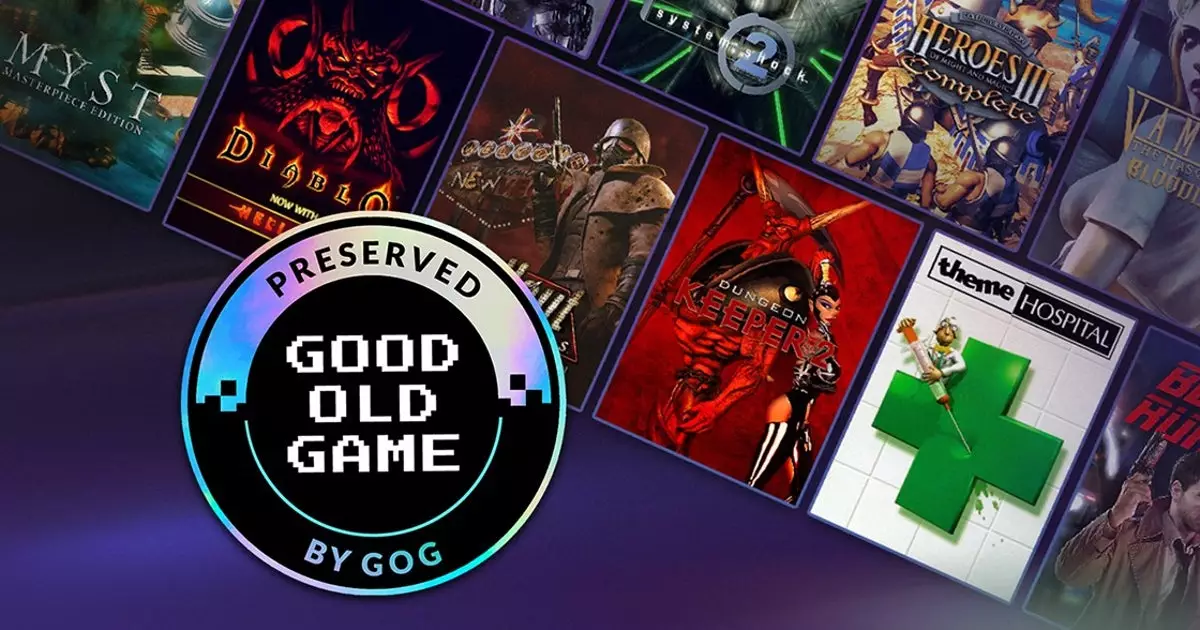Game retailers have been on a rollercoaster ride in recent years, and GOG (Good Old Games) exemplifies this trend. Originally celebrated for its robust collection of classic games, GOG has expanded its offerings to include both timeless vintage titles and contemporary blockbusters. This evolution raises questions about the company’s identity: Are they still the champions of game preservation, or have they simply become another storefront similar to the ubiquitous Steam, albeit with the appealing feature of no Digital Rights Management (DRM)?
The dynamic between nostalgia and modernity is palpable within GOG’s lineup. While the charm of vintage games attracted many to the platform, the inflow of modern titles indicates a strategic pivot. This shift, however, has not diminished their commitment to preserving the essence of gaming’s past, as GOG recently announced its GOG Preservation Program. This initiative aims to breathe new life into older games, ensuring that they remain playable on today’s hardware without sacrificing their original spirit.
The GOG Preservation Program is not merely a marketing gimmick; it involves a sophisticated approach to restoring classic games. Conceptualized as an enhancement of their previous restoration efforts, this program borrows inspiration from Valve’s Steam Deck Verified system, which assesses the compatibility of games with the handheld console. The GOG team has committed to not just re-releases, but to fundamentally improving these classic titles, ensuring they resonate with contemporary gamers and technology.
Through this program, GOG aims to eliminate bugs and incorporate modern features—such as support for advanced video codecs and compatibility with Windows 10 and 11—that could hinder these games from playing smoothly on current systems. When a game successfully meets these criteria, it earns a “Good Old Game” badge, signaling to customers that it has been meticulously updated and can be enjoyed without the hassle of unofficial patches or community mods.
The comprehensive nature of this initiative ensures that the games are not only restored but are presented as complete experiences. This includes all downloadable content (DLCs), expansions, manuals, and support for multiple languages, fostering a sense of authenticity that was often lost in the transition to digital gaming. Additionally, the commitment to providing offline installers enables gamers to enjoy these classics without the requirement for persistent online connectivity—a feature increasingly appreciated in a world where server shutdowns can render games unplayable.
Despite the enthusiasm surrounding the GOG Preservation Program, serious challenges loom on the horizon. One significant obstacle is acquiring permissions from original developers and publishers to alter and update their games. As anyone in the gaming industry knows, this process can be fraught with legal complexities and potential roadblocks. The memories attached to iconic games are invaluable, and while GOG desires to restore these experiences, it ultimately depends on the cooperation of those who hold the rights.
Moreover, GOG, as a commercial entity, must balance its preservation efforts with profitability. While it is commendable that GOG seeks to profit from the preservation of classic games, questions arise about the extent to which they can honor their commitment to nostalgic gaming without succumbing to the pressures of the market. Ultimately, they exist to sell games and not merely to act as curators of gaming history.
The GOG Preservation Program resonates strongly in a time when gamers are increasingly frustrated by decisions made by publishers that render beloved titles unplayable due to server shutdowns or software incompatibilities. The initiative serves not only as a lifeline to classic games but also as a critique of the industry’s tendency to prioritize profit over accessibility. It signifies a commitment to honor critically acclaimed titles while embracing innovation in gameplay experiences.
As GOG moves forward with this program, it stands at a unique intersection of nostalgia and progress. Their drive to ensure that both classic and recent games remain accessible to modern audiences echoes a larger cultural movement advocating for the preservation of interactive entertainment history. Whether this ambition translates into sustainable success will depend on GOG’s ability to navigate the challenges they face, but their journey back to their roots might inspire other retailers to follow suit. As the conversation surrounding game preservation develops, we must hope for a future where gamers are not only consumers but also stewards of gaming heritage.


Leave a Reply